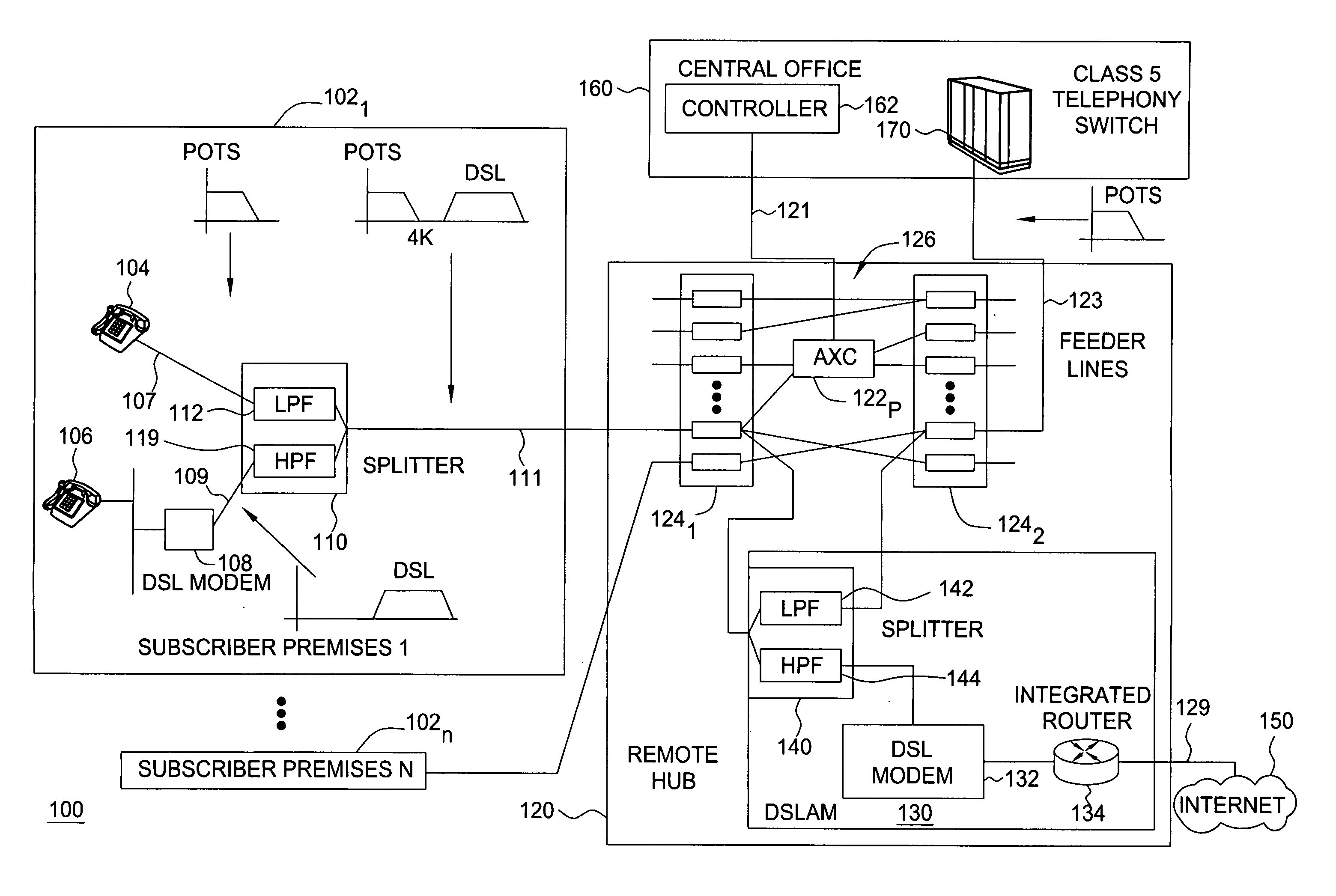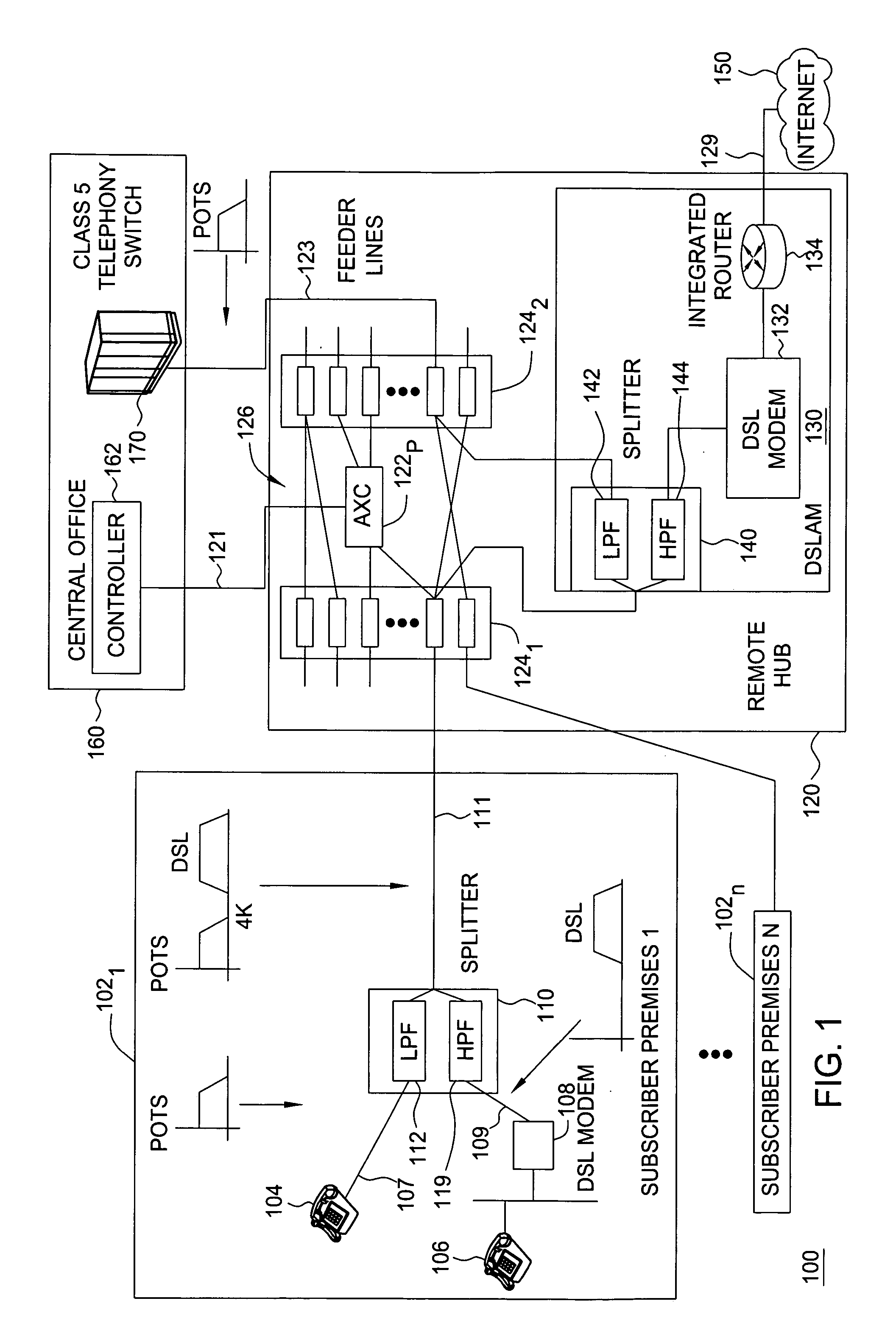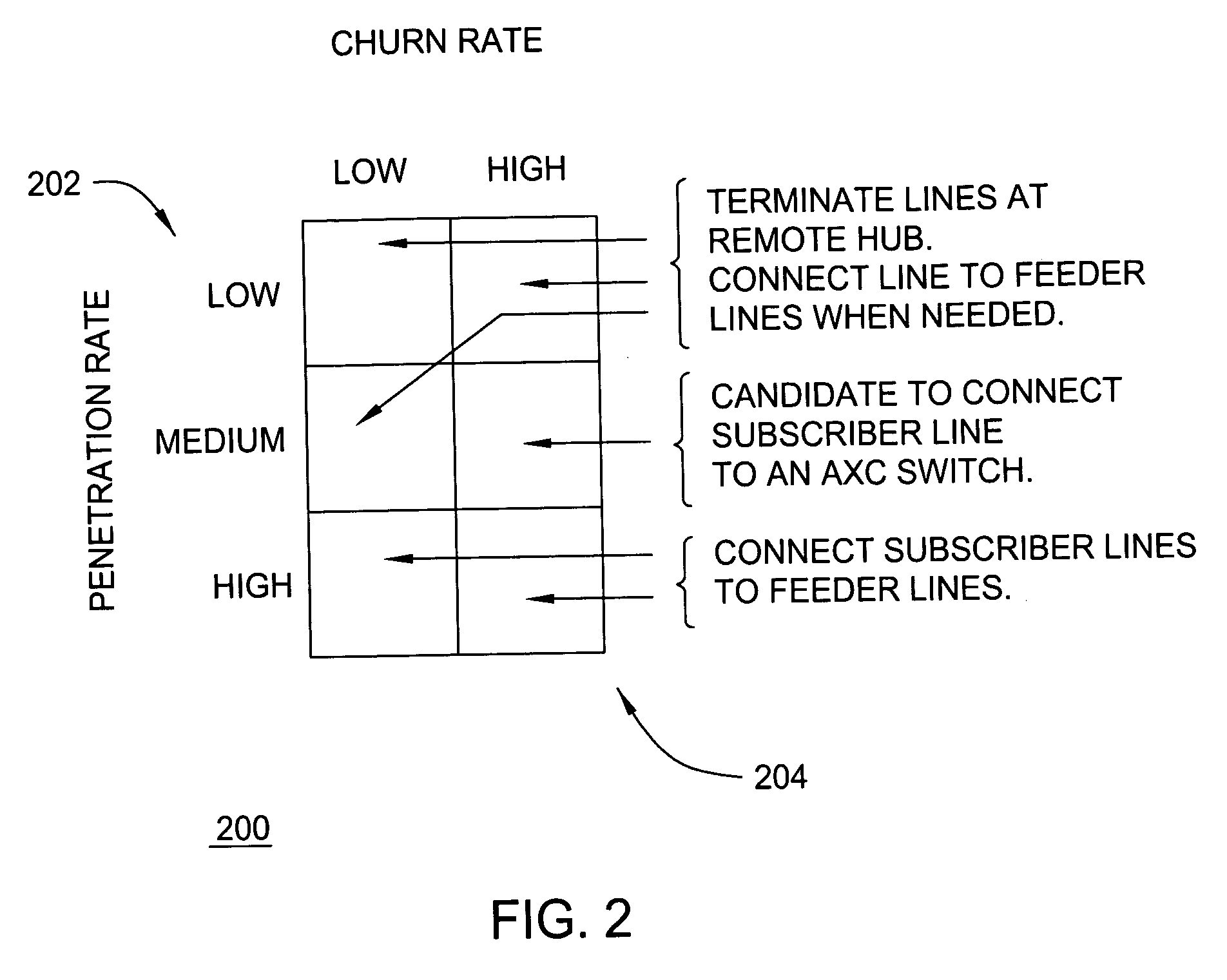Apparatus for decomposing an automatic cross connect system at a remote wiring hub
a technology of automatic cross-connect and remote wiring, which is applied in the direction of data switching networks, time-division multiplexing selection, duplex signal operation, etc., can solve the problems of high subscriber chum (i.e., turnover) rate of such broadband services, unfavorable activation of all subscriber lines, and high cost and time consumption of dispatches, so as to reduce the number of cross-points, reduce the cost, and reduce the effect of spa
- Summary
- Abstract
- Description
- Claims
- Application Information
AI Technical Summary
Benefits of technology
Problems solved by technology
Method used
Image
Examples
first embodiment
[0098]FIGS. 7A and 7B collectively depict a block diagram illustrating decomposition of the exemplary switch 122 of FIG. 5, in accordance with the present invention. As shown in FIG. 7A, the 785×785 switch is coupled between the group of 500 subscriber lines 302 and the group 502 of 500 feeder lines. Further, the switch 122 illustratively has a group 506 of 285 DSLAM lines coupled to the DSLAM 130, as well as a group 504 of 285 lines are fed back to the switch 122.
[0099] Referring to FIG. 7B, the decomposition of this exemplary switch 122 results in a decomposed switch 730 having two switch subsystems 7321 and 7322 (collectively switch subsystems 732), identical in structure, one on each side of the DSLAM 130. The first subsystem 7321 is situated between the subscriber lines 302 and the DSLAM 130 and comprises a first diagonal (or Y) switch 7341 and a first AXC module 7361. The second subsystem 7322 is situated between the feeder lines 502 and the DSLAM 130 and similarly comprises a...
second embodiment
[0111] The splitter 950 dedicates the LPF 952 and the HPF 954 to each subscriber line in the group 302. A low pass signal, which contains the POTS signal from a subscriber premise 102, is forwarded to the CO 160 via the feeder lines 123. A high pass signal, which contains the DSL signal, is forwarded to AXC 736 via one of the lines 734. The AXC switch 736 cross-connects the signal to an unused port at the DSLAM 130. Accordingly, this second embodiment effectively replaces one-half of the system by the splitter 950.
[0112] There are several trade-offs between the second decomposition (i.e., with the splitter) and the first decomposition (i.e., with the two subsystems). One consideration is the cost differences between the splitter 950 and an AXC module 732. Specifically, a splitter is much less expensive to purchase and implement than an AXC module. In particular, in many instances, the DSLAM 130 already implements the HPF, while the LPF is already implemented at the Class 5 voice swi...
third embodiment
[0127]FIGS. 12A and 12B collectively depict a flow diagram illustrating decomposing a non-canonical switch in accordance with the present invention. As shown in FIG. 12A, to support the DSL service, it is not necessary to have the number of feeder lines connected to the AXC equal the number of subscriber lines connected.
[0128] However, when deploying the non-canonical AXC, the service provider first needs to determine the characteristics of the subscriber line group being considered. The SP also needs to determine the penetration rate of POTS, DSL, and the line sharing option. Using the same example as discussed above, let the penetration rate for POTS and DSL is 60% and 50% respectively. Assume that of all the DSL subscribers, 80% of them will use the line sharing option. These assumptions results in the following: 40% of the line supports both the POTS and DSL service (i.e. line sharing option is used), 20% of the line supports only POTS service, 10% of the line supports DSL servi...
PUM
 Login to View More
Login to View More Abstract
Description
Claims
Application Information
 Login to View More
Login to View More - R&D
- Intellectual Property
- Life Sciences
- Materials
- Tech Scout
- Unparalleled Data Quality
- Higher Quality Content
- 60% Fewer Hallucinations
Browse by: Latest US Patents, China's latest patents, Technical Efficacy Thesaurus, Application Domain, Technology Topic, Popular Technical Reports.
© 2025 PatSnap. All rights reserved.Legal|Privacy policy|Modern Slavery Act Transparency Statement|Sitemap|About US| Contact US: help@patsnap.com



